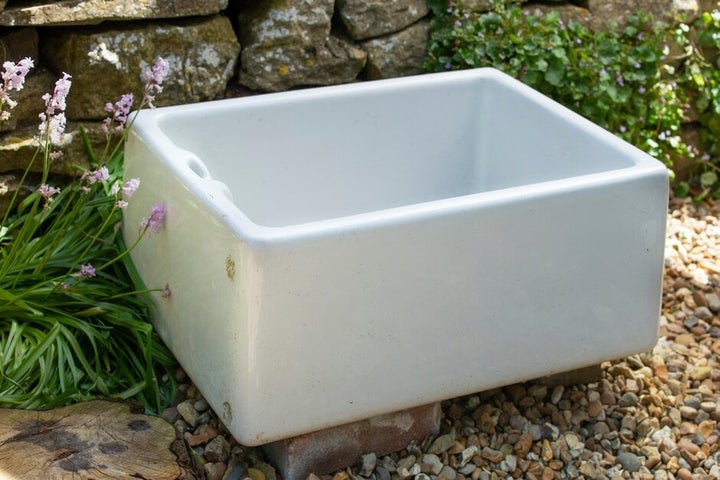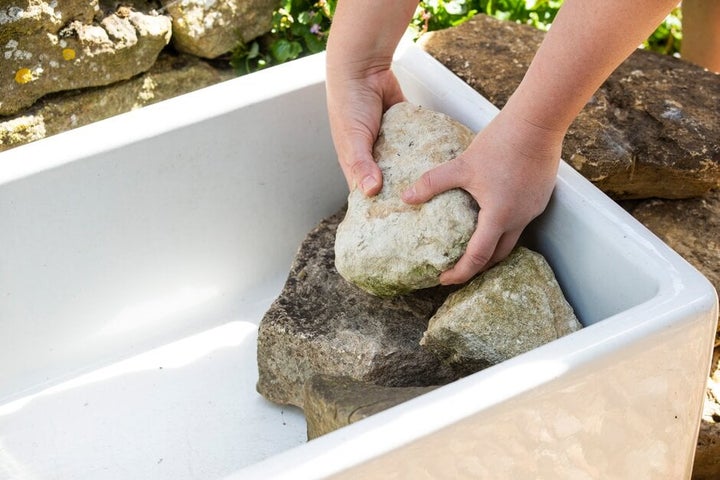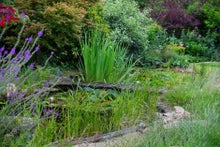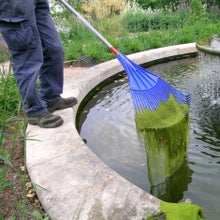
Quick facts
Make in spring or early summer
Ideal for even the smallest outdoor space
Choose compact plants that don’t grow too vigorously
Add large stones and a ramp to help wildlife get in and out
Fill it with rainwater, and top up regularly in hot weather
Getting started
What you’ll need to make your container pond:
- Recycled container, such as a reclaimed sink, half-barrel or large tub
- Pond liner, if your container isn’t watertight
- Several bricks, stones or logs, or a plank of untreated timber and some chicken wire
- Up to five pond plants suitable for small ponds
- Rainwater from a water butt
Top tip
Spring is the best time to make a container pond – the plants will settle in fast and soon start to grow. And wildlife will quickly find it.
A pond in a pot is easy to make and look after, and ideal if you’re short on space. Pond plants are widely available in many garden centres and from online suppliers. Suitably small plants for a mini pond include:
- Mini waterlily Nymphaea ‘Pygmaea Helvola’
- Water forget-me-notMyosotis scorpioides
- Corkscrew rush Juncus effusus f. spiralis
- Lesser spearwort Ranunculus flammula
- Arum lily Zantedeschia aethiopica
For more on choosing plants, see our guides:
Easy steps to making a container pond

- Pick your position – choose a location where you’ll be able to see the pond easily. It needs some sun, but not for the whole day, otherwise the water can warm up too much or evaporate rapidly in summer. Put the container in place now, as it will be difficult to move once filled. Even a mini pond can be a hazard for young children, so position it safely.

- Check it’s watertight – test it with some water to see if it leaks. If so, fit a flexible pond liner, securing it in place with a silicone-based sealant. Here we just needed to put in a plug.

- Make it wildlife friendly – build a ramp so that frogs and other wildlife can get in and out easily. We used a stack of large stones, but bricks, logs or a plank of untreated wood covered in chicken wire work well too. Plants, rocks, pots and other nooks and crannies near the pond will provide cover for wildlife too.

- Fill it with rainwater from a water butt. Tap water contains too many nutrients, which can encourage pond algae.

- Gently lower your plants into the pond. Three to five is usually enough for a mini pond – they may look small to start with, but pond plants can grow quickly. Choose a mix of floating and upright plants. See our guide to choosing pond plants.

- Sit back and let nature come. Don’t be tempted to add pondlife or frogspawn from elsewhere, or water from another pond – you could inadvertently overstock it or introduce diseases or weeds. Just be patient and watch to see what arrives naturally.
Aftercare
- Keep the water level topped up, especially in hot weather. Always use rainwater if possible
- Scoop out pond weed or algae if it starts to take over
- Cut off any fading or dead leaves, so they don’t end up in the water. Take out any that fall in
- Consider adding a mini bubble fountain to help oxygenate the water – solar-powered fountains are inexpensive and readily available
For more on looking after ponds, see our guides:
Also check out the Wild about Gardens guide Big or small, ponds for all for lots of wildlife pond advice.












